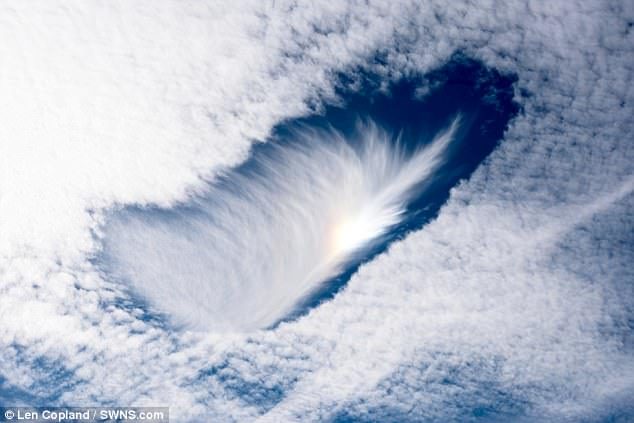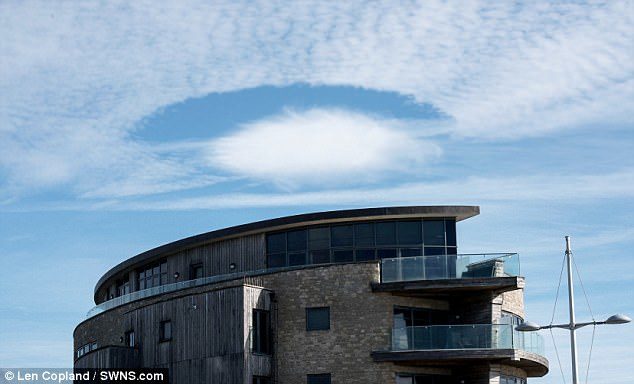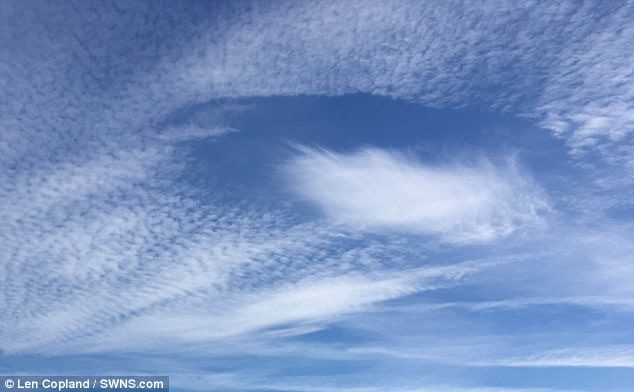
The rare atmospheric phenomenon is a strange cloud formation, known as hole-punch, or fallstreak clouds.
Experts say that the bizarre shapes are caused by aircraft, and are often mistaken for alien craft by confused onlookers.
The spectacular formation appeared in the sky above West Bay, Dorset, on Wednesday afternoon.
Photographer Len Copeland, 55, captured the images after noticing everyone around him was pointing their smartphone cameras toward the sky.
He said: 'People started stopping me and asking what was going on. They assumed I knew something because I was taking photographs, but of course I had no idea.


'There were these two, round-shaped UFO formations - it was really, really weird. One of them dissipated and left this feathery thing in its place.
'The sun then appeared behind it. It was stunning. No one knew what they were.'
A Met Office spokesperson identified the formation as a fallstreak hole.
The formations are characterised by a circular patch of sky surrounded by wispy clouds.
Sometimes the holes in fallstreak formations can expand up to 30 miles (50 km) across within an hour of appearing.
They form when temperatures are below freezing, but water droplets in the clouds have yet to freeze due to a lack of ice particles.
When ice particles form quickly, it causes a domino effect as the water droplets connect with the crystals.
These get heavier and then start to fall all of a sudden - leaving a large hole in the cloud.
The wispy clouds that form in the centre of the hole are the water particles falling.
Passing airplanes are thought to be the reason behind the formation of these clouds, since a drop in pressure caused by their wings or propeller tips cools the air quickly.

Weather Network meteorologist Erin Wenckstern has previously said: 'While they can be found worldwide, a skypunch is rather rare and the phenomenon is hard to explain.
'High up in the sky, thin clouds made from supercooled liquid water - meaning temperatures are below freezing, but cannot freeze in crystals - are disturbed as an aircraft punches through and cools the surrounding air, eventually forming ice crystals due to a drop in pressure.
'The ice crystals then cause the surrounding water droplets to evaporate, leaving a distinctive hole in the sky.'



Reader Comments